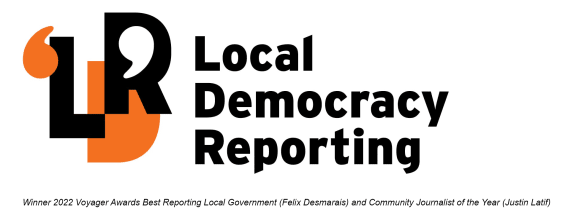
Aquaculture is one of the main industries included in Marlborough’s economic wellbeing strategy. Photo: Chloe Ranford/LDR
The Māori economy, aquaculture, aviation, forestry, the screen industry, technology and wine: these are the foundations of Marlborough's new economic wellbeing strategy.
Deputy mayor and economic development portfolio holder David Croad said the "blueprint" for Marlborough's future set a direction for the development of Marlborough's economy, which included both currently successful and emerging sectors.

It sets out the long-term view for Marlborough's economy - including its economic resilience, an ecosystem where start-ups can thrive and support for emerging industries. Its release follows a draft plan that went out for feedback in May.
"The past two years have been extremely challenging for some industry sectors, but the pandemic has also created new business opportunities," Croad said.

The aviation industry employed 955 people in Marlborough. Photo: Supplied/Stuff
"Our primary industries - viticulture, agriculture, forestry and fisheries - along with the science and technology and construction sectors have been the foundation of Marlborough's strong economic performance."
Marlborough District Council economic development portfolio manager Dorien Vermaas said the strategy provided a vision and guidance towards the future with a focus on improved wellbeing and productivity in Marlborough.
"It involves all industry sectors working together towards a single vision," Vermaas said.
"It's an exciting time to be looking forward and seeing how we can work together through collaboration, innovation and embracing new technologies.
"We're living in times of great change globally and Marlborough needs to be prepared. This strategy will help Marlborough create a new vision for itself and a plan for the future."
Māori Economy
Postgraduate student William MacDonald undertook research between December 2021 and March to understand how the Marlborough District Council could best support the local Māori economy.
Three "common themes" were found. These included the need for a central network for Māori businesses in Marlborough, revamping the central business district, utilising the Taylor River bank and telling local Māori stories.
Actions included presenting the strategy to iwi general managers and finding out how to best take the next steps to support Māori businesses and the Māori economy in the region.
Aquaculture
Marlborough produces about 60 percent of New Zealand's aquaculture export products, mostly with its mussels and salmon production. The strategy said this contributed to $108 million in GDP, 945 jobs and 150 businesses.
Strengths identified in the strategy included the "world-class" production of sustainable seafood produce, the sustainability of shellfish aquaculture and significant local investment within the sector.
The strategy identified opportunities for the sector, which included retaining and strengthening its position as a leading player in New Zealand's aquaculture, growing iwi presence within the industry, utilising waste streams from the sector to extract value from products, moving to bigger, open sea fish farms and raising the profile of shellfish produce.
Eighteen different actions were outlined in the strategy, including developing a committed process of engagement with iwi as treaty partners in industry development, encouraging improved environmental monitoring and working with Marlborough Airport and Port Marlborough to ensure Marlborough's produce could reach markets around the world.
The strategy also "acknowledged" work at a national level had been initiated by oceans and fisheries minister David Parker which would included a review of the Resource Management Act to "unlock the potential" of the industry. The council would be actively involved in this review.
Aviation
The aviation sector is made up of 33 business, which equated to 955 jobs and $96.6m in GDP.
The strategy outlined the intention to set up a Smart and Connected group for the aviation community, working with Sounds Air, Marlborough Airport and Marlborough Lines to ensure infrastructure was in place for electric planes and support efforts to resolve a land ownership "issue" at Marlborough Airport to "unlock" its potential.
Forestry
There are 285 forestry businesses in the region, equivalent to 487 jobs and $63.2m in GDP.
Challenges for the industry included the environment and future environmental expectations, labour shortages, market volatility and industry costs.
Recommendations for the Marlborough forestry sector included setting up a bi-annual meeting with the council, establishing career pathways and investigating into the co-design of an energy and waste strategy.
Screen and creative industries
An up-and-coming industry for the region, the screen sector in Marlborough provided 103 jobs, through 36 businesses, and $5.6m in GDP.
Screen Marlborough had worked with a group of stakeholders in the region to build the programmes for the sector since August 2021.
Recommendations for the sector included updating the Marlborough Arts and Culture strategy, engaging with iwi to tell the local Māori stories, building a crew list with all Te Tauihu (top of the south) talent and finalising the Sawmill Collaborative Trust, among other ideas.
Technology
The strategy said Marlborough had put itself on the map as an entrepreneurial and innovative region. This sector was made up of 150 businesses, 439 jobs, and $40.3m in GDP.
Actions in the plan included building the community through meet ups, financial support for start-ups and attracting technologists to Marlborough.

The wine industry employed 2900 people in Marlborough. Photo: Supplied/Stuff
Wine
The wine industry, which employed 2900 people and made-up 20 percent of Marlborough's GDP, was a key driver for economic wellbeing in the region, the strategy says.

There were 21 actions for the industry included in the plan.
These including continuing to work with Wine Marlborough to develop a programme to measure the carbon cost of the industry to work on offsetting it, working with the industry stakeholders on developing measures for the economic wellbeing of the industry and working on land availability for seasonal worker accommodation.
Local Democracy Reporting is Public Interest Journalism funded through NZ On Air


